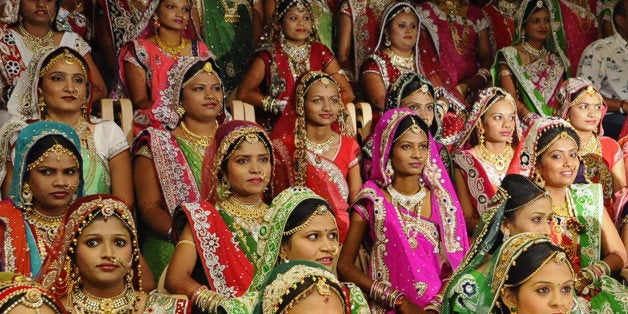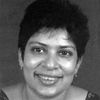
Every year around the world, 15 million girls marry before turning 18, the legal age of consent in many countries. India -- where I live and work -- is home to one-third of these brides. Early marriage cuts girls and young women off from choices and opportunities, often halting their education and increasing their odds of facing abuse, poor health and lasting poverty.
News media in India and across the globe are paying attention to this phenomenon, with coverage of early and child marriage expanding rapidly in recent years. Unfortunately, some of these stories present child marriage in ways that create misunderstanding at best -- and, at worst, may keep us from identifying and sharing effective solutions to this challenge.
As the co-founder of Point of View, a nonprofit that uses media and art to elevate the perspectives of women in India, I've been curious about this new wave of media coverage. What kinds of child marriage stories are journalists typically drawn to? What might those stories mean for the girls and young women most affected by the practice? I recently set out to answer these questions and identify trends in how the news media depicts child marriage, especially in India.
Here's what my team discovered:
Recent news stories tend to focus on very young brides.
Although most "child" marriages actually take place among adolescents, most images of the practice depict extremely young girls. This is particularly common in India -- even though the median age of marriage for women here is 17, and a rising proportion of underage marrriages in the country happen when girls are between ages 15 and 18. While the marriage of these very young girls remains a troubling challenge, it is not the norm in most of India. These child bride images certainly grab our attention, but may lead people to misunderstand what the practice of early marriage typically looks like -- and, in turn, how to best address it.
Newsmakers often depict child marriage using sensational language and stories.
Some journalists use adjectives like "barbaric" and "medieval" to describe early and child marriage -- words that seem to condemn not just the practice, but entire cultures and communities of people. Many of the story lines we discovered focused on tragic tales of young girls wed to old men, bride kidnappings, rescues and escapes. While these stories might ring true for some girls, this kind of drama just doesn't match up with the reality facing the vast majority of adolescent girls who get married in India. For the most part, their parents are not villains, but regular mothers and fathers who sincerely believe that they must arrange early marriages in order to secure their daughters' futures.
Most news stories that present solutions focus on using the law to end child marriage -- but child marriage has been illegal in India for decades.
Despite laws against child marriage, the practice persists because families and entire communities have long viewed early marriage as a practical way to ensure young women have long-term economic security, stay safe from sexual violence and harassment, and avoid the potential scandal of romance and sex outside of marriage. To change those views, people need to understand why the practice is harmful, stop associating a girl's sexual purity with her entire community's so-called "honor," and start imagining opportunities for girls that extend beyond childbearing, cooking and cleaning. And there are hundreds of nonprofit organizations and activists in India working to create just this sort of social change and to advance women's rights. These experts use innovative approaches in a diverse array of communities in India -- and I, for one, would love to see more news stories about initiatives that seem to really work.
Reporters can find fascinating, true stories by listening to those most affected by child marriage: adolescent girls.
If you want to tell a story about child marriage, it makes sense to talk to someone who is actually facing pressure to marry early.
But a surprising number of news stories on this topic, especially in Indian media, don't actually include the perspectives of girls and young women. Reporters in the state of Jharkhand, for example, have covered child marriage by writing about official events related to the issue. All four Hindi newspapers in the state reported on the same event that honored four girls for their work advocating against child marriage, but the articles only featured photos of the girls, not their quotes or thoughts. If journalists shared more about the experiences of these girls, we'd have richer news stories that help readers concretely understand early and child marriage -- and that explore promising solutions to this deeply-rooted challenge.
I'm more curious than ever about what these girls have to say: What are their hopes and dreams? What do they think about love, sex and marriage? Do they feel empowered to make their own choices? If they don't, why not?
I suspect their answers might make a real difference -- and a pretty compelling story, too.
Bishakha Datta is the co-founder and executive director of Point of View, a nonprofit media organization based in Mumbai, India. With support from American Jewish World Service, she and colleague Bhani Rachel Bali analyzed trends in how the news media depicts child marriage, especially in India.
